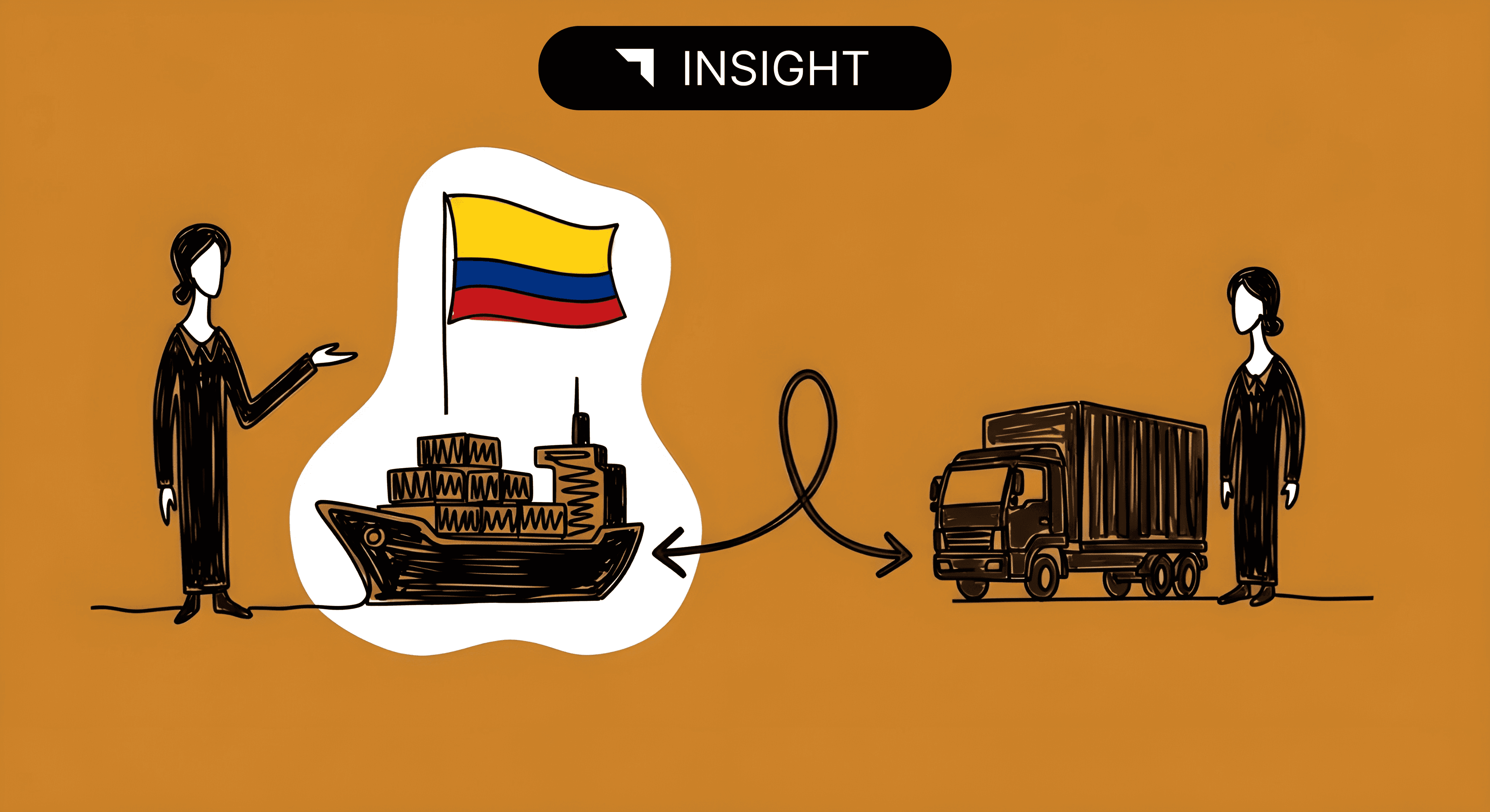
Export Snapshot: Colombia – What U.S. Exporters Need to Know About the United States–Colombia Trade Promotion Agreement (CTPA)
Colombia is one of the fastest-growing and most strategically positioned markets in South America. The United States–Colombia Trade Promotion Agreement (CTPA), implemented in May 2012, created a strong framework for duty-free trade, transparency, and investment protection. For U.S. exporters, the CTPA opened a market of more than 50 million consumers, modernized customs procedures, and strengthened IP and digital trade standards across the region.
This agreement not only eliminated tariffs on the vast majority of U.S. goods but also established long-term mechanisms for economic cooperation and innovation, making Colombia a cornerstone for U.S. businesses expanding in Latin America.
Overview of U.S.–Colombia Trade
- U.S. Exports to Colombia (2024): Approximately $15.5 billion, led by machinery, agricultural goods, vehicles, chemicals, and software services.
- Colombian Exports to the U.S. (2024): About $20.3 billion, dominated by oil, coffee, flowers, apparel, and precious metals.
- Tariff Treatment: Over 80 percent of U.S. industrial exports and over half of agricultural exports became duty-free immediately after CTPA implementation, with most remaining tariffs phased out over time.
- Trade Balance: U.S. exports to Colombia continue to grow, driven by expanding demand for technology, energy, and infrastructure products.
Key CTPA Advantages for U.S. Exporters
- Near-Complete Tariff Elimination: Industrial, consumer, and agricultural goods receive broad duty-free or reduced-tariff treatment, with a few sensitive products subject to phase-out schedules or safeguards.
- Transparent Customs Procedures: Faster clearance and uniform documentation standards through electronic systems.
- Intellectual Property Protection: Enhanced IP safeguards for technology, software, and pharmaceutical sectors.
- Digital Trade Enablement: Protections for cross-border data transfer and e-commerce support technology-driven exporters.
- Fair Government Procurement: U.S. suppliers can bid on Colombian public contracts on equal footing with domestic firms.
These features create a stable, rules-based environment for companies seeking both immediate cost savings and long-term market presence.
Strategic Export Opportunities
| Sector | Opportunity | Compliance Note |
|---|---|---|
| Infrastructure & Construction Equipment | Colombia’s infrastructure modernization plan drives demand for U.S. heavy machinery and components | Validate HTS codes and rules of origin under Annex 3.3 |
| Energy & Renewables | Expanding renewable energy initiatives create opportunities for U.S. solar, wind, and power management technologies | Review environmental and certification standards under CTPA Chapter 9 |
| Software, Cloud & AI Services | Colombia’s digital transformation supports U.S. SaaS, fintech, and data analytics exports | Ensure data protection compliance under Colombian Law 1581 and CTPA digital provisions |
| Agriculture & Food Processing | Strong growth in U.S. exports of grains, dairy, and meat products | Verify compliance with sanitary and phytosanitary rules under Chapter 6 |
| Healthcare & Medical Devices | Colombia’s public health investments increase demand for U.S. diagnostics, equipment, and telemedicine tools | Obtain local registration with INVIMA (Instituto Nacional de Vigilancia de Medicamentos y Alimentos) |
Rules of Origin and Documentation
To qualify for preferential treatment under the CTPA, goods must meet specific rules of origin demonstrating substantial transformation within the United States. Exporters should:
- Complete a CTPA Certificate of Origin for every qualifying shipment.
- Keep supporting records for at least five years for verification by customs authorities.
- Confirm that non-originating inputs do not exceed allowable thresholds.
- Consult U.S. Customs and Border Protection (CBP) or Colombia’s DIAN for official binding rulings if classification questions arise.
- Use digital recordkeeping and FTA management tools to maintain compliance across multiple product lines.
Emerging Trends and Trade Insights
- Digital Transformation: Colombia’s startup and fintech ecosystem is expanding rapidly, driving demand for cloud infrastructure, cybersecurity, and analytics services.
- Energy Transition: Major investments in renewable energy and natural gas are opening export pathways for U.S. cleantech and engineering solutions.
- Nearshoring Opportunities: Colombia’s proximity and strong logistics infrastructure make it an attractive hub for nearshore production serving U.S. markets.
- Agricultural Technology (AgTech): Precision farming tools, irrigation systems, and smart sensors from U.S. manufacturers are gaining traction.
- Sustainability Alignment: Colombian regulations increasingly reward environmentally responsible exporters with competitive procurement advantages.
By aligning compliance and innovation, U.S. businesses can position themselves as trusted partners in Colombia’s next phase of industrial and digital growth.
Why It Matters for Exporters
The CTPA delivers more than tariff relief—it builds a bridge for technology, services, and industrial innovation across the Americas. For U.S. exporters, it ensures:
- Broad duty-free access for most industrial and agricultural products
- Streamlined customs procedures with digital documentation and advance rulings
- Modern IP and data protection frameworks for high-tech and creative industries
- Predictable legal standards for long-term investment and partnership
Colombia’s combination of regional connectivity, growing middle class, and pro-trade policy environment makes it a top destination for U.S. companies looking to expand in Latin America.
Before entering the market or updating your FTA documentation, use Trade Insight AI to automate HTS verification, simulate tariff impacts, and validate rules of origin compliance under the CTPA.
Series Note:
This article is part of the Export Snapshot series, highlighting key U.S. trade agreements and how exporters can use data-driven tools to stay compliant while expanding globally.
Related News

November 20, 2025
How GRI 1 Shapes Every Classification Decision: Understanding Legal Text Before Anything Else
Read more →
December 12, 2025
EAPA Due‑Process Ruling, Tariffs Entrench, and ACE Delays: Your 2026 Compliance Briefing
Read more →
October 14, 2025